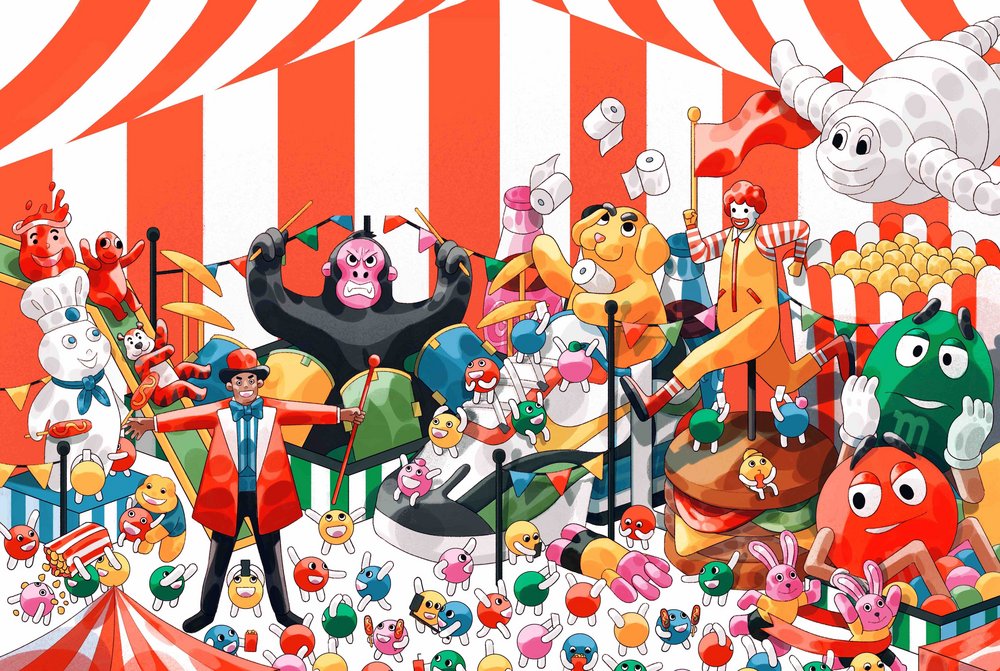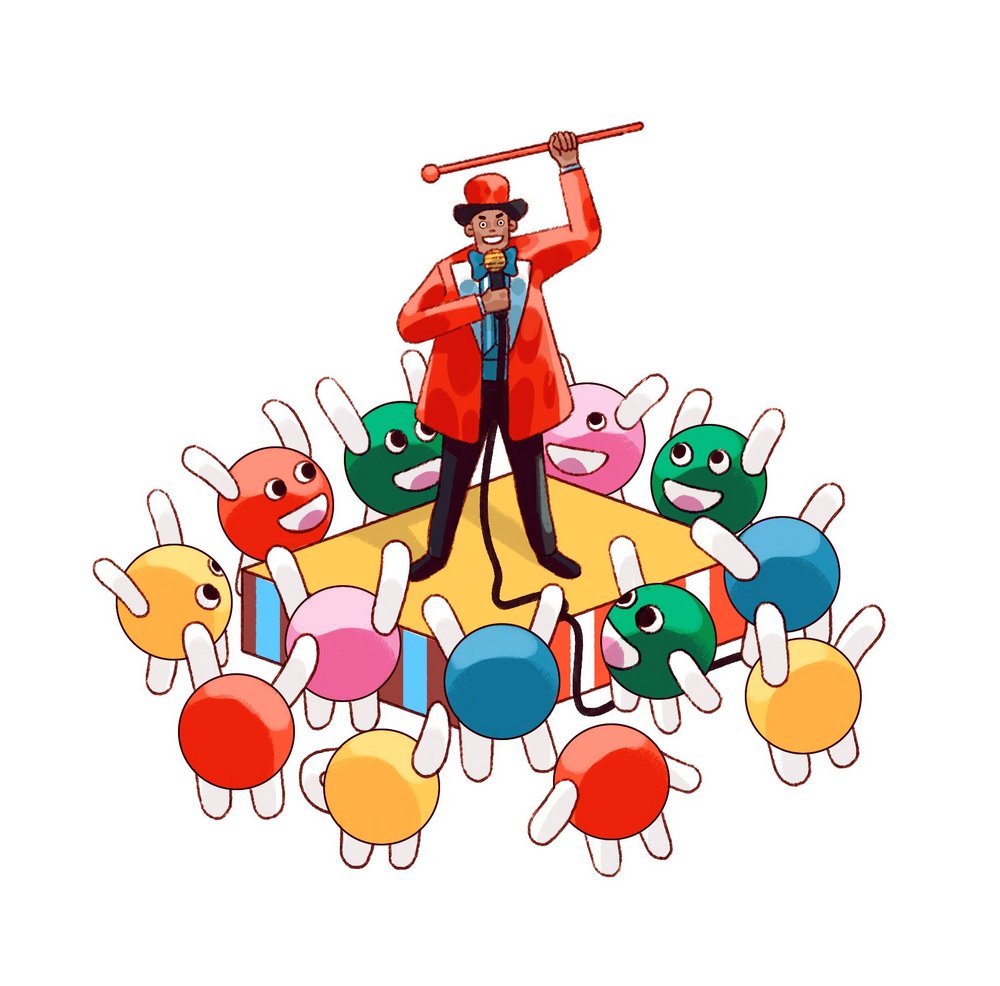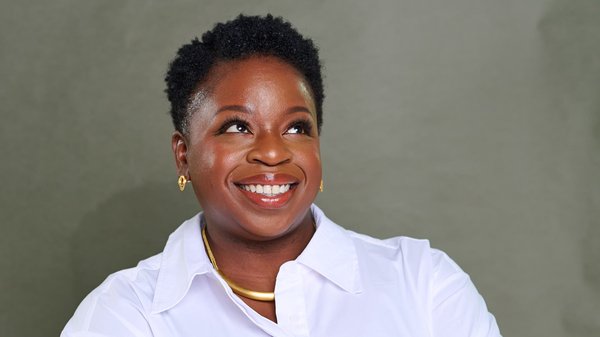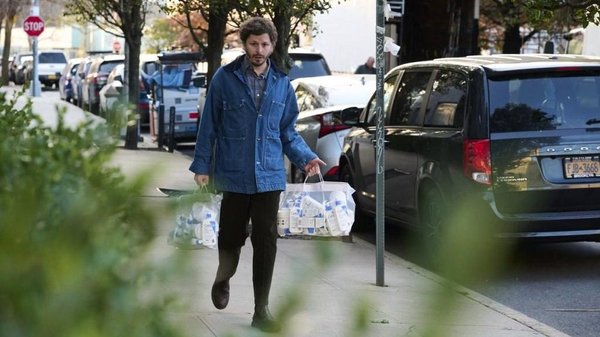Paul Feldwick explains why brands need fame /
The legendary practitioner of planning on the importance of showmanship in advertising

Illustration: Mojo Wang
What do circus impresario PT Barnum, Coca-Cola, Warburtons and Victoria Beckham have in common? They all successfully tapped the commercial power of showmanship.
But Paul Feldwick, the former global brand planning director at DDB Worldwide, believes it’s a technique that is being largely ignored by advertisers today.
In his book, Why Does The Pedlar Sing?, Feldwick argues that, throughout history, selling and entertainment have been inextricably linked – right back to the medieval pedlar who would travel between communities and beguile audiences while selling his wares. But even though the psychological and sociological reasons why fun and frivolity have the power to sell are now well understood, today’s advertising seems less inclined to entertain. It’s a state of affairs Feldwick attributes to advertisers being so preoccupied with rational sales messages that they’ve neglected a simple truth: showmanship is good business.
Contagious caught up with Feldwick to hear about what showmanship looks like in the world of brands today and why, despite what we’ve all been told, people continue to buy from clowns.
What is the thesis of ‘Why Does The Pedlar Sing?’
Did the pedlar sing because he sold more ribbons that way, or did some wandering minstrel realise he could make more money by selling stuff rather than just passing the hat? It’s always been both – entertainment and commerce support each other in so many ways. Kylie Jenner launches a range of cosmetics and becomes an instant billionaire [Jenner’s billionaire status has since been disputed by Forbes]. Omega’s latest 007 watch has already sold out at $50,000 a pop before the new Bond movie has even opened. The tradition of PT Barnum is all around us once you start looking for it. It’s just not to be found in the stuff that wins ‘creative awards’.
Clients and ad agencies nearly always talk about advertising in terms of rational persuasion, delivering messages, benefits, and so on. But they’re incredibly coy about how much of it frankly looks like popular entertainment, and why this is actually important in making ads that work. I wanted to speak up for this other side of it, to justify why it’s important, to celebrate its long history as well as its relevance today. Above all, to remind the industry that that’s what ‘creativity’ should mean, if it means anything.
You just need to put on a show that keeps people in their seats and puts them in a good mood. They’ll like you better, and then they’ll buy more of your stuff.
Paul Feldwick
Speaking of which, you take issue with how ‘creativity’ is bandied about the industry…
It’s been horribly muddled by being confused with innovation or originality for its own sake, and even more so by the arcane judgments that now dominate too many creative awards. But it ought quite simply to mean the artistry and skills that make things popular and distinctive. I did manage to avoid the word for about three-quarters of the book, but realistically it’s not going to go away. So, we’d better be clear what we mean by it.
You make a strong case that popularity and distinctiveness can be achieved through showmanship. What does that mean in the context of advertising?
Faris Yakob [co-founder of the creative consultancy Genius Steals] tried to define ‘content’ as ‘something created by or for a brand that people choose to consume’ – as opposed to advertising which we essentially pay people to consume, indirectly. I don’t accept that dichotomy. Advertising can and often has been something that people choose to consume, as long as it’s created to be entertainment and not a boring sales pitch or an offensive interruption. Paid-for time and space is what Howard Gossage [legendary copywriter of the ‘Mad Men’ era] called a ‘stage on which to perform’ – you just need to put on a show that keeps people in their seats and puts them in a good mood. They’ll like you better, and then they’ll buy more of your stuff.
A core principle of your former agency Boase Massimi Pollitt was, ‘If you’re going to invite yourself into someone’s living room for 30 seconds, you have a duty not to bore them or insult them by shouting at them.’
That was my paraphrase of what Martin Boase used to tell us when I first joined the agency. It seems much more profound to me now than it probably did at the time! I’m afraid I think most advertisers have entirely forgotten this, if indeed they ever knew it. It’s not just the dreary self-centredness of most TV commercials, but even worse online where any website seems to think it’s OK to interrupt you continually. Be a charming guest, not an aggressive tout.

Illustration: Mojo Wang
Which brands are putting on a good show in their campaigns at the moment?
It’s not so easy to find good examples today, which is the problem. The British baking firm Warburtons embraces show business in their ads and have genuinely funny scripts, high production values, and good use of celebrities like Robert de Niro and the Muppets. These ads are based around parodies of popular culture that everyone can relate to – like the gangster movie and the classic serial.
Adam&eveDDB did a wonderful ad for the AA featuring a little girl lip-syncing in the back of the car to ‘Proud Mary’ while being rescued by the AA man. It had great use of popular music, a human story with characters you could relate to, as well as cute kids with curly hair, which are perennially popular. It transformed the business, but the following year they dropped it for something completely different. Maybe they had a good reason for doing that, but I fear it’s more likely just what happens nowadays.
I recently saw a really good Super Bowl ad for Budweiser from Wieden+Kennedy, ‘Let’s Grab a Beer’. It was an engaging drama done in a few seconds with characters, situations and events. Elegant and effective storytelling containing a real truth. No edginess, cynicism, posing, or blowing shit up, just artistry. It can still be done, so please do it more often!
There are definitely people who doubt the power of entertainment over a rational sales message. What proof is there that embracing show business is a route to success?
I think the evidence is clear and ubiquitous. Advertising builds brands by building mental availability and positive affect, otherwise known as fame and popularity; it does this by satisfying four conditions.
Firstly, something that people want to watch, read or own, because it gives them some sort of satisfaction. Secondly, reaching mass audiences. Thirdly, creating distinctive assets that anchor your brand uniquely in people’s minds. Lastly, giving the public ways to engage actively with the brand, talk about it, wear it, share it, argue about it, and so create social diffusion. It’s supported by empirical studies like Binet and Field’s analysis of the IPA awards and the work of the Ehrenberg-Bass Institute, and by our understanding of psychology and neuroscience through Daniel Kahneman and Antonio Damasio.
You use PT Barnum as a role model for advertisers. Compared to the hard data ofthe aforementioned researchers, what can brands and agencies learn from a 19th-century circus impresario?
Perhaps the central thing to learn from Barnum is that it’s all about creating fame. Byron Sharp calls it ‘mental availability’, which is accurate, but then nobody wrote a hit musical called ‘Mental Availability’, did they? What I try to show in the book is that fame is never automatic – you have to start with a good-enough performance, something that appeals to people, but it also has to reach mass audiences. It has to be fluently distinctive, and it has to succeed in getting the public to actively engage with it in as many ways as possible.
Barnum was the first great master of these techniques in the modern era. Take the Jenny Lind [Swedish opera singer] tour. First, a good product – she was a really good singer, and very attractive, with a great backstory of being untaught having grown up in rural Sweden. But at the end of the day, she was only, as The New York Times said, ‘a first-rate vocalist’ – it took the rest of Barnum’s skills to turn her into a phenomenon.
He made her universally known, through a set of spectacular stunts: the largest tour ever, a very public arrival in New York with cheering crowds, the first tickets auctioned for huge prices, and so on, all of which the papers have to endlessly report and comment on. Third, she has strong distinctive assets: her face appears everywhere with its distinctive hairstyle, she’s known as ‘The Swedish Nightingale’, and she’s associated with Barnum himself who is already a superstar. Fourthly, with Barnum’s active encouragement, the public buy a huge range of Jenny Lind merchandise wherever she goes. The press meanwhile praises her and condemns her, thereby continuing to inflame the public furore.
It all works together, and more than a century before TV or the internet were even thought of. We just have more channels today, but the principles remain the same, and the Kardashians or the Beckhams, and Charli D’Amelio are all lineal descendants of ‘Lindomania’.

Illustration: Mojo Wang
Which brands do you see as most successfully deploying the age-old tricks of Barnum and the medieval pedlar today?
By definition, most of the most famous ones: Nike, Apple, Amazon. Not all in the same way, but look at how Apple, originally a computer company, is now just as much as an entertainment provider, and how Amazon has used its TV streaming service to enhance its already massive fame. That’s why Jeff Bezos said, ‘Every time Amazon Prime wins another Golden Globe, we sell more toilet rolls.’ I also think Red Bull is a great example of how to put on spectacular shows, in the great circus tradition, to support a drink. That’s today’s version of the medicine show.
See Paul Feldwick at Contagious Live /
Paul Feldwick will be at our Contagious Live event on 28 April to explain what it takes to shove a brand into the spotlight. Join us for an evening of rapid-fire insights and inspiration (as well as pizza and beer) at Framestore’s Chancery Lane offices in London. Space is limited, so book your place now.
Want more of the same? /
We don’t just write about best-in-class campaigns, interviews and trends. Our Members also receive access to briefings, online training, webinars, live events and much more.







